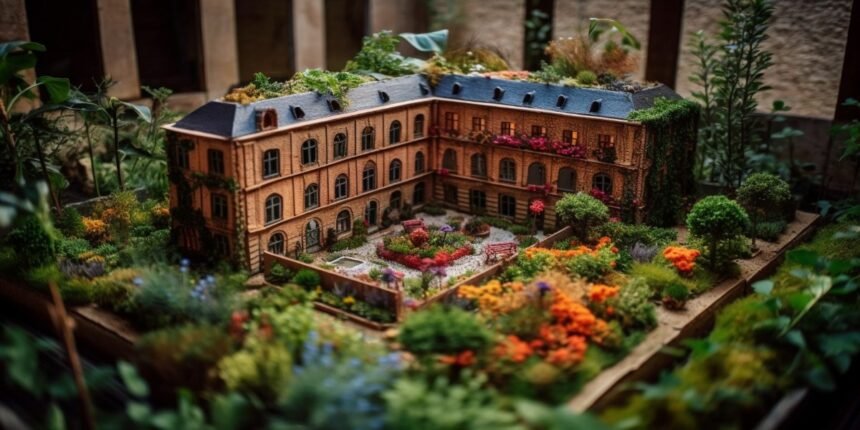Landscaping is more than just planting trees and mowing lawns—it is an intricate blend of art and science that enhances the aesthetic, functional, and environmental aspects of outdoor spaces. Whether for residential, commercial, or public areas, effective landscaping can transform ordinary plots of land into captivating environments that offer beauty, comfort, and utility. In this article, we will explore the fundamental principles of landscaping, the benefits it brings, and some practical tips to help you make the most out of your outdoor area.
Understanding Landscaping
At its core, landscaping involves planning, designing, and maintaining the natural and built environment surrounding a property. This process incorporates a variety of elements such as plants, soil, water features, lighting, walkways, and even structures like pergolas or retaining walls. Good landscaping requires an understanding of the local climate, soil type, plant species, and the intended use of the space.
One of the primary goals of landscaping is to create a harmonious and balanced environment. This means choosing the right combination of colors, textures, and shapes that complement the architecture of nearby buildings and the natural surroundings. For example, soft, flowing lines in garden beds can contrast beautifully with sharp edges in paved areas, creating visual interest.
The Benefits of Landscaping
Effective landscaping goes beyond appearance; it offers a wide range of practical benefits that improve quality of life and add value to property.
- Enhancing Property Value
A well-designed landscape significantly boosts the market value of a property. Potential buyers are naturally drawn to homes with inviting and well-maintained outdoor spaces. Landscaping can increase property value by as much as 15%, making it a worthwhile investment. - Environmental Advantages
Landscaping plays a crucial role in promoting environmental health. Trees and shrubs act as natural air filters, absorbing carbon dioxide and releasing oxygen. Additionally, well-placed plants reduce soil erosion, improve water retention, and help manage stormwater runoff. Incorporating native plants can also support local wildlife, such as birds and beneficial insects. - Improved Comfort and Usability
Thoughtful landscaping enhances the usability of outdoor areas, providing shade, wind protection, and privacy. For instance, strategically planting trees around a home can reduce cooling costs by blocking harsh sunlight in the summer. Landscaping also creates spaces for recreation, relaxation, and social gatherings, turning backyards into extensions of indoor living areas. - Health and Well-being
Spending time in well-landscaped environments has been linked to reduced stress, improved mood, and increased physical activity. Green spaces encourage outdoor exercise, gardening, and social interaction—all of which contribute to better mental and physical health.
Essential Elements of Landscaping Design
Creating an effective landscape requires attention to several key design elements:
- Balance: This can be symmetrical or asymmetrical. Symmetrical balance is formal and orderly, often used in traditional gardens, while asymmetrical balance feels more natural and relaxed.
- Unity: Ensures that all parts of the landscape design work together to create a cohesive look. This can be achieved through consistent use of colors, textures, and materials.
- Proportion: Relates to the size of elements in relation to each other and the overall space. Large trees in a small garden may feel overwhelming, while small plants in a large area may feel insignificant.
- Rhythm: Guides the eye through the landscape using repetition of shapes, colors, or textures.
- Focal Point: A specific area or object that draws attention, such as a statue, water feature, or a unique tree.
Practical Landscaping Tips
If you’re considering landscaping your property, here are some practical tips to get started:
- Plan Before You Plant
Begin with a detailed plan that outlines the layout, plant selection, and any hardscape features like patios or walkways. Consider how the space will be used and which areas receive sun or shade throughout the day. - Choose Plants Wisely
Select plants that are well-suited to your climate and soil conditions. Native species tend to require less maintenance and are better for the environment. Mix evergreen plants with seasonal flowers to ensure year-round interest. - Soil Preparation Is Key
Healthy soil is the foundation of a thriving garden. Test your soil to determine its pH and nutrient levels. Amend it with compost or other organic matter to improve texture and fertility. - Incorporate Water Features and Lighting
Water elements like fountains or ponds add a soothing sound and visual appeal to a landscape. Outdoor lighting can highlight key features, provide safety, and extend the usability of outdoor spaces into the evening. - Maintenance Planning
Consider how much time and effort you can dedicate to maintenance. Some landscaping designs are low-maintenance, focusing on drought-tolerant plants and simple irrigation systems, while others require regular pruning, fertilizing, and pest control.
Landscaping and Sustainability
In recent years, sustainable landscaping practices have gained prominence as environmental concerns rise globally. Sustainable landscaping focuses on minimizing water use, reducing chemical inputs, and promoting biodiversity. Techniques such as xeriscaping, which involves using drought-resistant plants, help conserve water without sacrificing beauty.
Composting organic waste from landscaping activities can enrich the soil naturally, reducing the need for synthetic fertilizers. Additionally, creating wildlife-friendly gardens with native plants supports pollinators like bees and butterflies, essential for healthy ecosystems.
The Role of Professional Landscaping
While some homeowners enjoy taking on landscaping projects themselves, many benefit from the expertise of professional landscapers. Professionals bring knowledge of horticulture, design principles, and local regulations. They can help avoid costly mistakes and create a plan tailored to your needs, budget, and style.
Professionals can also assist with complex tasks such as installing irrigation systems, building retaining walls, or managing drainage issues. For larger projects, a professional landscaper can oversee the entire process from design to implementation, ensuring the best results.
Conclusion
Landscaping is a powerful tool for transforming outdoor spaces into beautiful, functional, and sustainable environments. By understanding its principles and benefits, you can create a landscape that enhances your property’s value, supports the environment, and enriches your daily life. Whether you choose to tackle the project yourself or enlist the help of professionals, investing time and effort into landscaping will yield rewards for years to come.
Also Read: Crafting Outdoor Living Spaces







